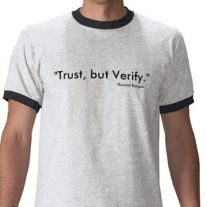"Hunting" Diversity
Building on the last blog (on what's really important about diversity), let's hike further down the tip of this iceberg and take a look at how you can go about finding "diverse directors." Keep in mind that, if you don't know what you value, setting clear objectives and finding practical solutions will always make the process much harder.
So -- how DO you find 'diverse director' candidates?
I'm continually amazed at how often I'm asked this. In fact, this question came up yet again, just the other day, even though the person who asked it is someone whom I consider to be an experienced, talented, and exceptional director. I learned that his board had brought on several "diversity directors" in the past, who appeared, at first brush, to satisfy their needs. Within a short period of time, however, disappointment arose over their ability to add real value to the business. In fact, one we learned about could have hurt the business through a serious conflict of interest.
My quick, top-level advice for such a hunt is to:
- Look around the table;

- Look ahead;
- Gather advice;
- Define your ideal;
- Involve many eyes and ears;
- Sort through the clutter;
- Verify, then re-verify the actual competencies and fit.
Now, let's dig a little deeper:
Look around the table: Whom and what you already have. this shouldn't be a visual assessment, but a deep, honest, and direct discussion among yourselves on what's working and what isn't (an honest assessment adds great value here). What does each director add to or detract from the board's ability to get things done? Get this down first.
Look ahead: Where Are You Heading? You're the Board: it's your job to get this right. ![]() Review the company's long-term strategy, industry trends, and pressures. Can you adequately address the risks you see ahead? What are the new markets you're going after? More importantly, how strong is your feeling that maybe you all are missing things? Once you know what you have and where you want to go, you can focus on: "what's missing?" Hopefully, you'll have noted that fresh perspectives and talents may be called for.
Review the company's long-term strategy, industry trends, and pressures. Can you adequately address the risks you see ahead? What are the new markets you're going after? More importantly, how strong is your feeling that maybe you all are missing things? Once you know what you have and where you want to go, you can focus on: "what's missing?" Hopefully, you'll have noted that fresh perspectives and talents may be called for.
Gather advice: Get additional input on what you need. While you're there on the board to guide management, management already has or can best gather for you the information on what types of perspectives would add value. Management knows (or had better know) your employees, your customers, new markets, your competitors, and more. Solicit as much varied input on what perspectives exist and are missing as you start refining your ideas on what's needed through your HR people, General Counsel, Sales and Marketing, even your Risk Officer. While you're at it, consider soliciting your industry analysts too.
Define your ideal: To reiterate from the last blog: what kind of diversity do you want? Who would make the best candidates? You already have my thoughts on this. This issue is more around diversity of perspective versus what size, shape, color, or gender box you're being pressured to check off. Remember, diversity of perspective may come with any of the above. But competency, value, and fit or also crucial to get this done the right way!
Now, let's flesh this work out even further. After you've established your needs, focus on your wants. Develop the ideal candidate -- start by aiming high, and work your way towards reality (even the best of us only walk on water occasionally). This is the time to include some emotion into the image of your new "ideal, diverse director." Here are some thoughts about what many like you consider:
What you REALLY want What you really DON'T want
Energy, time commitment, and enthusiasm Over-achievers and board sitters
Social sensitivity Self-indulgers
Rock solid reputations Diversity of ethics/morals
Competency over expertise One-trick ponies
Certain level of humility Personal agendas: it's about them, first
Persistence and patience Firebrands and change-agents, etc. . .
Put your ideal--but still generic description down in writing-- and polish it up with all the additional input you've collected, thoroughly understood, and absorbed.
Involve many eyes and ears: Start looking, and involve every board member in this, not just a committee. This will help you should you choose to work with an outside group to get a true independent perspective on your starting lineup. There are a number of ways to easily start with the usual suspects: generic board candidate lists (nearly every group has one), catch-all recruiters, industry associations, friends and relatives, professional associates, etc. All can be useful on some level, and few have it all. Look in many baskets. Use all your (and their) networks, as well as outside advisors, especially those who've earned your trust.
Caveat: There are lots of places to look, lots of players, and lots of people only too willing to throw "diverse" candidates at you. Having gained consensus on and documented the qualifications and attributes of an ideal candidate will be invaluable in helping you filter out the many who will be offered to you who will only serve as "check off the box" profiles, but provide little else. Also, be open to new views and perspectives (remember we're talking about diversity of perspective on many levels), so don't be so enamored with your "ideal" that nearly everyone is filtered out.
Sorting through the clutter: So, how will you select? If everyone contributing has been diligent, you'll have collected a pile of paper-potentials, from many sources -- some with agendas of their own, others who provided the recommendation with agendas of their own, and some seemingly on target. The selection and narrowing down portion is hard work, and probing for the best fit to your "ideal" is time consuming, and even exhausting. But, it can also be exhilarating and eye-opening at the same time.
Here is where a committee and an independent perspective works best. Those who specialize in boardroom succession can and will know how to help you do a deep dive on  what you've accumulated. They will also be able to further refine your "ideal candidate" definition, providing an independent look at what you might have missed. The right independent professional is skilled at poking into the "nooks and crannies" of the "potentials" and can quickly put into perspective the attributes, aptitudes, and attitudes that each may (or may not) bring to the boardroom.
what you've accumulated. They will also be able to further refine your "ideal candidate" definition, providing an independent look at what you might have missed. The right independent professional is skilled at poking into the "nooks and crannies" of the "potentials" and can quickly put into perspective the attributes, aptitudes, and attitudes that each may (or may not) bring to the boardroom.
Almost there? Hardly! I'm serious because this is where many fail. Bios with attractive photos and CVs are ONLY a beginning. If you're working with a competent independent, they will (or should have) done a "third degree" on each of your best candidates. Be prepared for some heavy lifting yourself as well. From this point on you'll want to spend some serious face time with each of the best candidates and some time with those who have an inside view into how they behave and work. At this stage, it is appropriate to ask: who, among your board, are the best interviewers? Who's willing to take the time to go down the rabbit hole? Who really cares about this evaluation an selection process, not to mention, the opportunities and risks associated with the new director?
Through your research, you might be surprised at how the most promising will arise from comparative interviews. In addition, you'll get a better perspective of how your new director will begin to work with, fit in with, and enhance your already sound group of directors. But also ask: how lengthy and rigorous an interview process do you want to put candidates through? Be respectful of their time, too. Many of the most talented, accomplished professionals will not want to sit through endless grillings. Plan out who should ask what, and cover new ground each time.
Here, again, it may be good for an inside the board/outside the board look at each candidate. Ultimately, though, the board, (and later, the shareholders) must make the decision. I caution you to not to go to vote with just one, or two opinions.
Verify, then re-verify the fit. Finally, a last word before you bring that impressive, capable breath of fresh air onto your board, verify, and then re-verify the competency and fit. Are they really skilled, current, and relevant to your business? Are morals, personal behavior patterns (how they behave in their personal environments can be an indication  of how someone might behave in the boardroom and with management too), are they truly inquisitive, or just a good showman/woman? Personal backgrounds and reputations reflect on the entire board and are easily seen by your employee base. Here is where it's worth investing in a good, thorough background check.
of how someone might behave in the boardroom and with management too), are they truly inquisitive, or just a good showman/woman? Personal backgrounds and reputations reflect on the entire board and are easily seen by your employee base. Here is where it's worth investing in a good, thorough background check.
This has really only skimmed the surface of what it takes to do exceptional work in director succession and building board diversity. There is more but, for now, consider this as a jumping off point for your next board search.
Good luck on your journey to bringing more diversity, and strength, into your company and your board!

BoardBench Companies, LLC | 5 River Road, Suite 235, Wilton, CT USA | 203.493.0080
